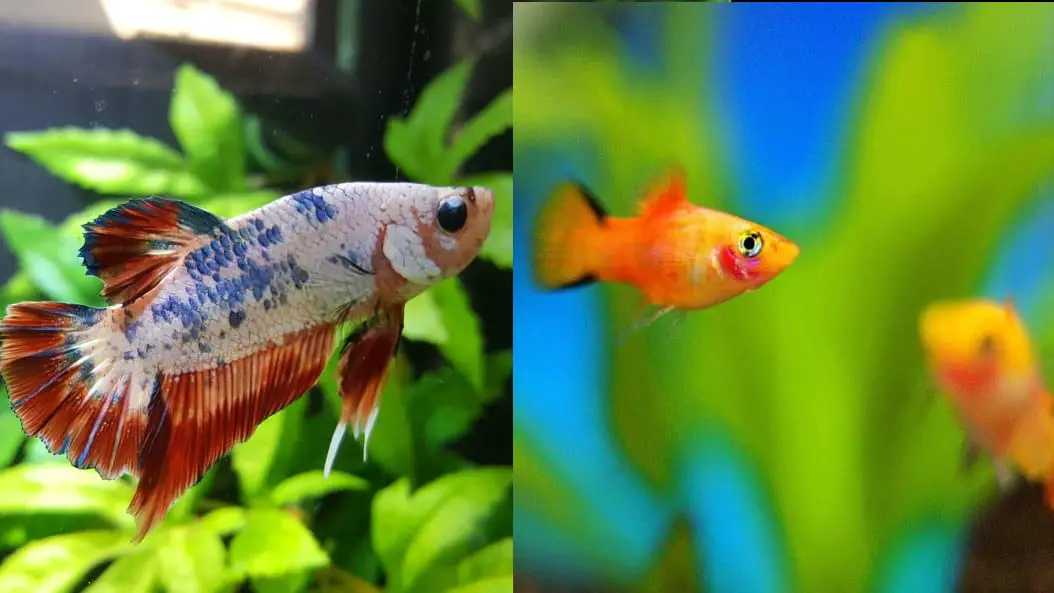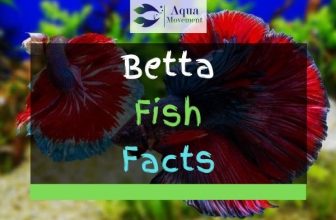Betta Fish and Platies – Tips For Keeping Them Together
If you want to keep betta fish in your aquarium then it may not be easy to find the right fish to company them in a tank. The main reason behind it is the abruptness of bettas which can cause injury as well as death if the other fish does not notice their movement.
It is difficult to find the right companion for your betta fish due to their different behavior, diets and tank requirements. But you need not be a pessimist as you can find certain fish which can live with your bettas peacefully.
Platies can be the right fish to live with your bettas. The information provided in this write-up can help you to know whether betta and platies can survive together or not.
The main problem with bettas is its self-dependence. Though bettas can live with platies but it all depends upon the aggressiveness of your bettas.
Platies can be a great companion with your bettas if they are not so aggressive.
The things that can influence your decision to keep platies with a betta are briefly discussed here under for your consideration.
Table of Contents
Betta and Platy Community Tank Size
The minimum size of the tank to keep betta and platies together should not be less than 10 gallons due to various reasons like:
- Social nature of platies fish: Being a social fish platies cannot be kept alone. So you will have to keep 2-3 platies in your aquarium along with a betta and for them, you must have a 10-gallon tank. You will have to buy a bigger tank if you want to have more platies and betta in your aquarium.
- Provide enough space to swim: The space required for platies to swim is another reason for having a 10-gallon tank for 2-3 platies and a betta. It will be better to buy a wider tank than a deeper one as it will provide them more space to swim in without interacting with each other.
Aggressiveness Of Betta To Platies
Normally bettas are aggressive to other similar fish so it is better to keep fish with bright colors and long flowing tail with them. In this situation, platies can survive with a betta as they have bright colors but they do not have long flowing tails.
But when your betta becomes aggressive to your platies then you will have to remove it from the tank. However, if you have male platies in your aquarium then you should keep an eye on your tank as they have a tendency to nip the fin of other fish.
So if the beautiful fin of your betta is rot then it can be due to the attack of platies on it. So, at times both betta and platies can be aggressive to each other.
Environment

Though the origin of platies and bettas is from different parts of the world still their requirements are amazingly alike.
Platies have originated from the canals and ditches of Mexico whereas bettas are found in the river basins and rice paddies in Southeast Asia.
Both of them love to live in a tank with plants. So you must have lots of ornaments and plants in your tank to hide if you like to add platies to it.
pH And Temperature
A temperature between 70- and 80-degrees F and a pH of 7 to 8.3 can be ideal for the survival of platies.
On the other hand, 78 degrees F temperature and 7.0 pH can be perfect for a betta. So it can be easier to keep 2-3 platies with a betta.
What Do Platies And Bettas Eat
In the wild platies are considered opportunistic as they can eat algae and insects. But when you put them in your aquarium with a betta then they can eat whatever you put in the tank to feed your betta like fish pellets and a variety of live food.
But if you add some plant-based food like fibrous vegetables etc. to the tank then it can be good for your platies as they eat algae a lot. It will help you to meet their needs to clean her gastrointestinal tract.
How Will You Feed Your Betta With Platies
While feeding a betta with 2-3 platies in your aquarium you will have to ensure that your betta can get an adequate amount of food as bettas swim slower than platies. Platies can eat the entire food as normally they become aggressive while feeding them.
So you must have a few other choices to feed your betta, in such situations. You can attract platies to the other end of the tank by sprinkling food flakes on one side of the tank so that your betta can get enough food.
You can also put some food in a net and catch your betta in it so that you can ensure that it has got enough food.
How Long Do Bettas and Platies Survive

Usually, platies can survive in an aquarium for 2 years even if they can live up to 5 years in the wild.
On the other hand, a betta can also live up to 5 years.
Your platies can also live for 5 years in your aquarium if your betta is friendly with them.
What About Babies Of Platies
Platies can produce many babies if they are not controlled. It can be good if you want to increase their number in your aquarium but you will have to buy a bigger tank for them. The babies of platies will also allow your betta to get live food more easily.
But it will also make the breed of platies unmanageable as you will have to clear more feces and provide more food for the survival of your fish. It will also increase the risk of diseases to the fish as well as strenuous for the filter to keep the water clean.
So if you want to avoid babies of platies then you can take a few steps like:
Buy platies of one sex only
Though it can be a good solution for not having babies of platies still you have to be careful. If you buy all-male fish then the chances of overcrowding of than can be negligible but at times they can attack each other after being aggressive.
Similarly, the chances of pregnancy to female fish can increase the risk of an increasing number of babies in the tank. But if you keep male and female fish together then both betta and platies can eat as many Fry’s as they can in the tank.
So if you are planning to keep platies of both sexes then you must buy one male with two females.
Remove all places to hide
You can control a sudden increase in fry by removing all the ornamental hides and plants where they can hide.
Though it is a temporary solution still it can reduce the number of Fry’s in the tank as your betta and platies will eat most of them. You can add hides when you see that the number of Fry’s is under control.
Give away matured Fry’s
You can give away the fry which has grown up and making your tank congested for other fish. You can give them to hobbyists or pet stores to take care of them.
You can also use platy Fry’s as food for other animals you have.
Avoid releasing them in the wild
You should never discharge platies in your tank into the wild even if they are too many in number.
Though it can be a cruel decision still you can flush down in the toilet instead of releasing them into the wild. It can be risky for the other species as they can be invasive on them.
Feed them as food
You can use Fry’s of platies as food to other species in your tanks including bettas. If you have more than one aquarium then you can use the Fry’s to feed fish in the other tanks.
Conclusion
Thus, the information provided in this write-up can help you to know whether betta and platies can live together or not. They can live together if you are vigilant and take care of them properly. You will have to keep an eye on the behavior of both the fish as they can be aggressive at any time.
If you see that the fin of your betta has been nipped by platy then you will have to remove it immediately from the tank. If left unattended then it will weaken the immune system of your betta and can lead to various types of diseases for the whole lot.
While adding plants and ornaments to the tan of your aquarium you should keep in mind that they should not be hard and sharp as they can damage the fins and skin of your betta.
So, if you are searching for a companion for your betta then 2-3 platies can be the right choice for your aquarium.




